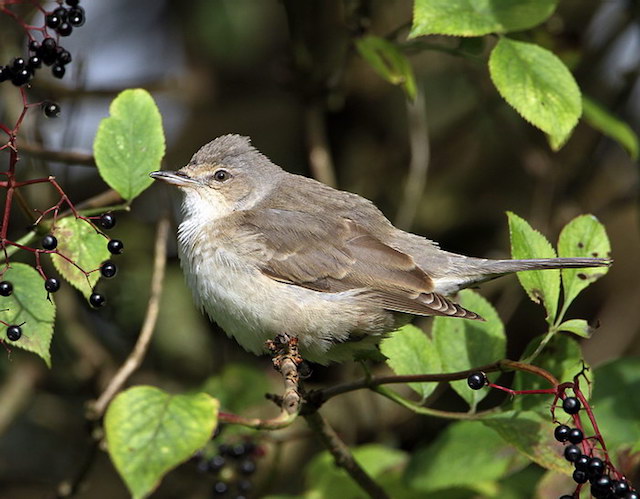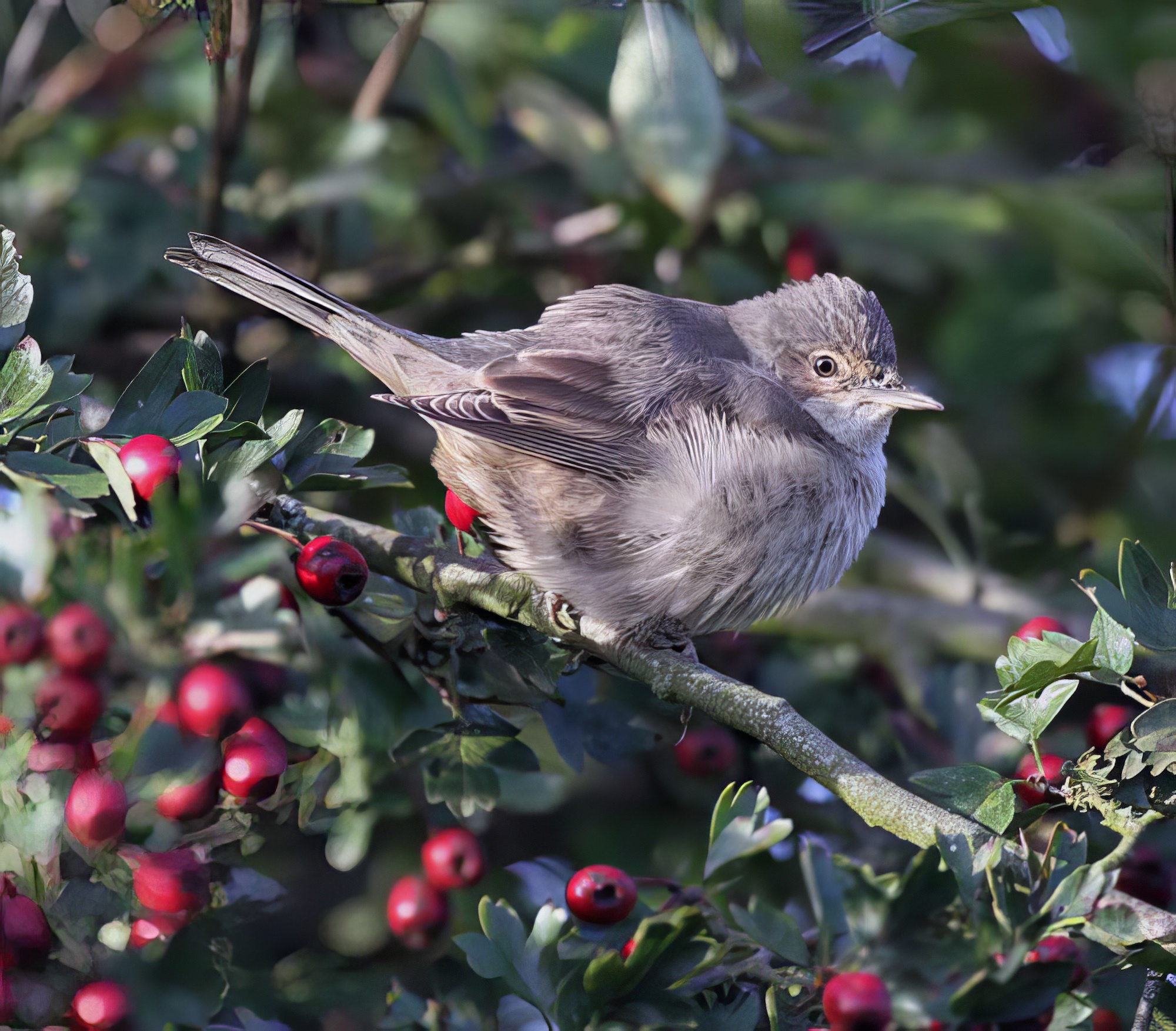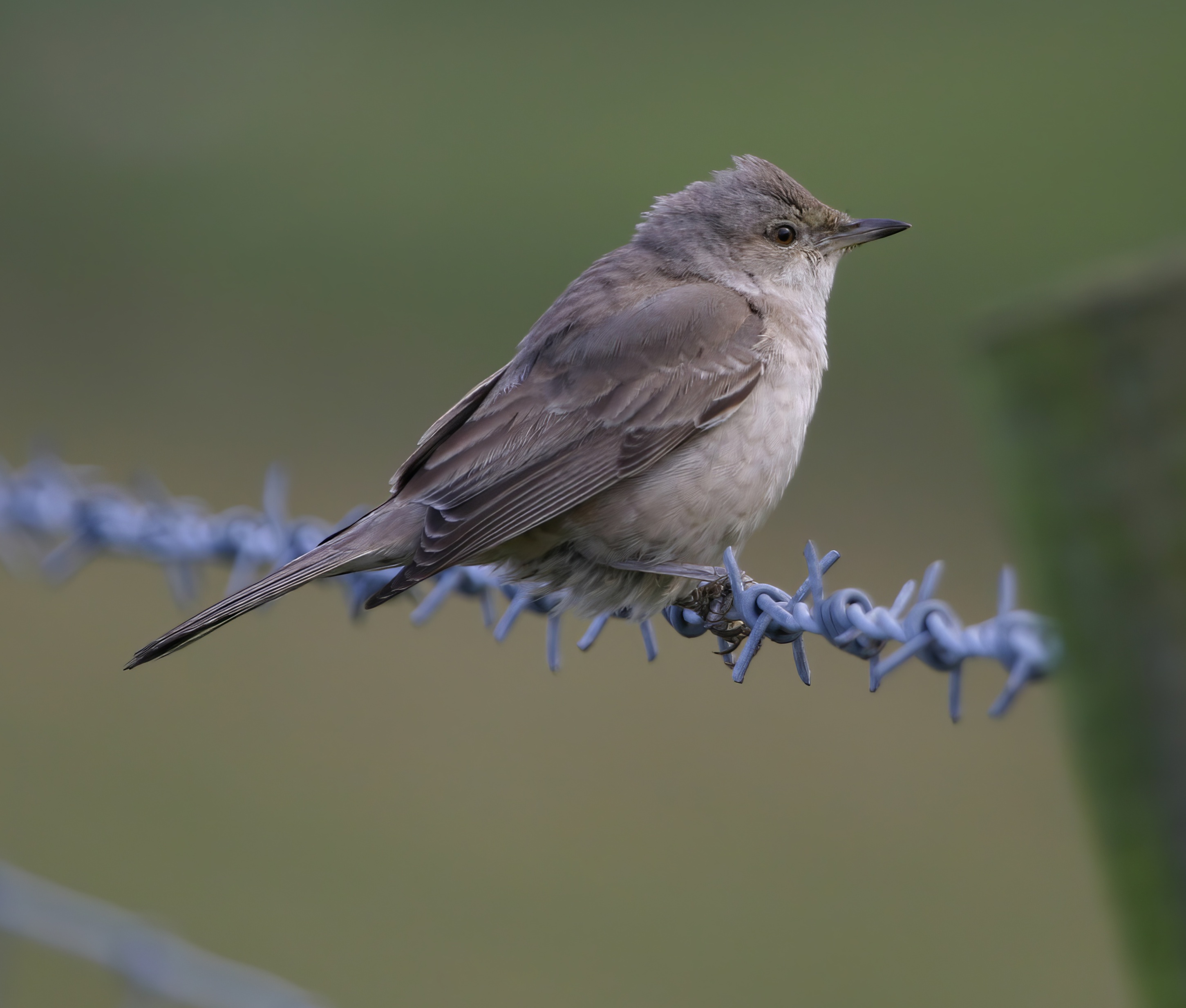Barred Warbler Sylvia nisoria
Very scarce/scarce coastal passage migrant mainly August-October, exceptionally to December.



Barred Warblers: left and centre, Donna Nook October 2nd 2010 (Dean Eades, Simon Spavin); right, Covenham Reservoir November 29th 2004 (Graham Catley).
One shot at North Cotes by G. H. Caton Haigh on Sep 5th, 1898 was the first county record:
'On September 5th I shot an immature female of the Barred Warbler (Sylvia nisoria), at North Cotes. The bird was feeding on a bunch of brambles in a ditch not far from the coast. It was very wild, flying a considerable distance when flushed. The wind was east, very light, with fine hot weather. The only other migrants seen were a Willow-Wren and a young Spotted Flycatcher.'
Eight more were reported by Lorand and Atkin up to 1927 although no specific dates were available. There were no more until regular reporting began in 1951. After that, Barred Warblers were regularly recorded and caught by ringers in small numbers on the coast each autumn. There have been no spring records.
In terms of numbers of records (not individuals) there have been 101 in August, 182 in September, 42 in October, 8 in November and 1 in December. The heyday for Barred Warblers in the county was in the 1970s and 1980s when 10-15 birds were recorded annually and up to 8 ringed per autumn at Gibraltar Point; exact numbers of individuals at coastal sites are difficult to determine with 1-2 birds present over a long date range. The earliest autumn migrant was one at Tetney on August 4th, 1966 and the latest an inland migrant at Covenham Reservoir on November 11th, 2004 which stayed until December 9th. There have been at least six other November records between 4th-27th. It is debatable whether migrants are arriving later in the autumn with no October records until 1971 (October 26th, Gibraltar Point) with the first November record also in that year (November 2nd, Donna Nook). Total numbers have also fallen and in the 2000s averaging around four birds per year although this average was inflated by a good year in 2010, when there may have been as many as 15. There have been blank years in 2016 and 2017 and the recent trend is one of decline.
Reference
Bowdler Sharpe, R. (Ed.) (1898). Bulletin of the British Ornithologists' Club 8: 6
Naylor, KA 2023 Historical Rare Birds <https://www.historicalrarebirds.info/>
(Updated with reference to the new Birds of Lincolnshire (2021) November 2022)

